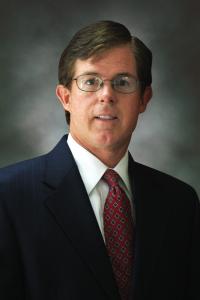In 1995, I became the sole owner of my family’s CPA practice. The challenge that arose was that I had always been a highly billable partner with no management responsibilities. As the sole owner, I was forced to take on the CEO position. Despite a BS in Accounting and a Master’s in Taxation, I had no formal management training. I had always been a “worker bee,” but now I was both a manager and the key producer.
With no organizational chart, no compensation packages and no means of managing the practice, I flew by the seat of my pants. There were five or six professionals on my staff and we bounced off each other throughout the day. Tax seasons were horrendous with impossibly long hours and even more confusion. In my first year as CEO, I logged over 3,000 hours and was burning out. I had a wonderful wife and three young daughters at home and wanted to spend time with them. My health was suffering and my motivation was waning.
One problem was issues among the staff. They liked to get the flames of conflict going with drama and gossip. My biggest peeve was their email chitter-chatter. These were non-chargeable conversations that were not at all tied to production. Sometimes, I would find them with their feet up, talking and gabbing. Since their compensation was not tied to their productivity, it didn’t matter; they were having a great time.
I had some issues, too. Afraid of confrontation, I avoided disciplining the staff. I had one employee who always had some personal problem which she brought to the office. She would come in late or leave suddenly for an emergency. I kept working with her and giving her chances because I was too timid to dismiss her.
I knew this was the wrong way to run a practice. I was making a profit but at what cost? I rarely saw my family and my health was declining. On the other hand, I didn’t want to start from scratch learning practice management. I looked for a consulting company and in 1998, I became a Sterling client. I went with Sterling because they had a full toolbox and a successful track record with CPA firms.
One of the first steps I took with my consultant was to clean house and dismiss the deadweight, i.e., the staff who were creating conflicts and working for a paycheck. We used Sterling’s hiring and testing procedures to replace the deadweight with good staff.
We implemented the “Management by Statistics” system and I began to monitor the performance of every employee, from staff accountants down to the front desk. Then we tied in their compensation with their production. The results were immediate and dramatic. Once the staff realized I was monitoring their productivity, and that their compensation was tied to their performance, they got a lot more productive fast.
We organized the practice and defined each employee’s functions. I shed “hats” I should not have been wearing, such as doing all the billing myself. It had never occurred to me to delegate that task, and many other tasks, to the staff. Everyone was grooved in on what they were supposed to do and what others were supposed to do so there were no cross-duties.
We also implemented a bonus system. I set weekly goals for the practice and if we make it, all staff get a cash bonus. I also set yearly goals for the practice and when we make those, I take the staff on weekend getaways. These bonuses motivate the staff even more and make it fun to work.
By increasing the efficiency of the firm, we increased our capacity, too. For instance, I had a very good staff accountant who just wasn’t on board and left the practice. Without replacing her, we were able to rearrange her workload and attract even more work. As a result, instead of revenues dropping as I had expected, they increased by $300,000 that year. I consider that miraculous.
My staff are all on board. Some have been with me for over 20 years now. Whereas I once felt we were bouncing off each other, I now feel like we are in a rowboat and all rowing in unison. I have found that this alignment has turbocharged my profitability.
I realized that as the practice owner, I had been unable to see the forest through the trees. I never would have thought of these improvements on my own—I needed the outside viewpoint of my Sterling consultant, and her organizational know-how.
Fifteen years ago, before Sterling, we were a small disorganized firm grossing $750,000 per year. Now we are an efficient machine grossing $1.6 million per year and will hit $2 million in the next few years. With Sterling, over the years, we doubled our revenues with only a moderate increase in staff.
Sterling helped me put my life back in balance. In the early days, my wife warned my daughters not to become CPAs when they grew up. Now in college, one daughter has decided to become a CPA and another is considering it. That says a lot about the results of the Sterling program.

